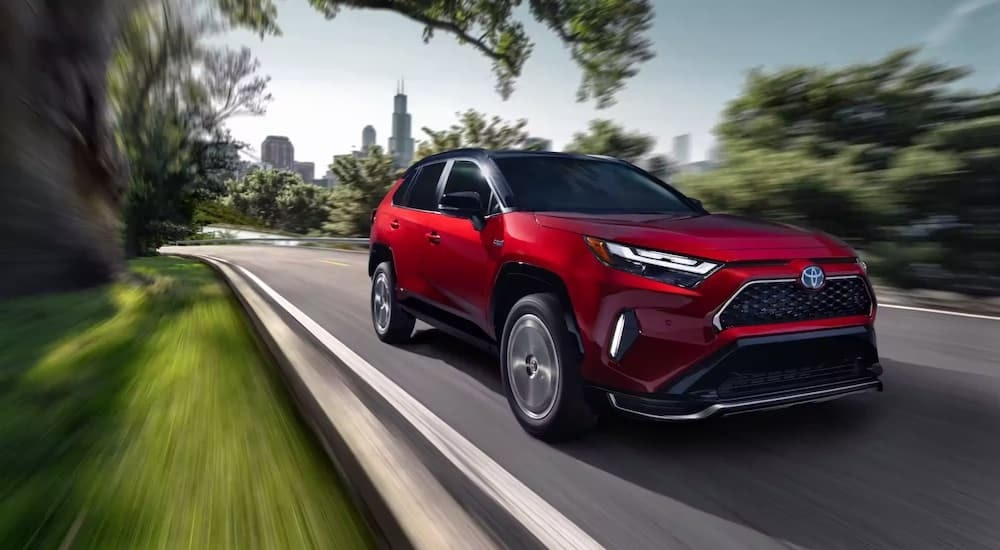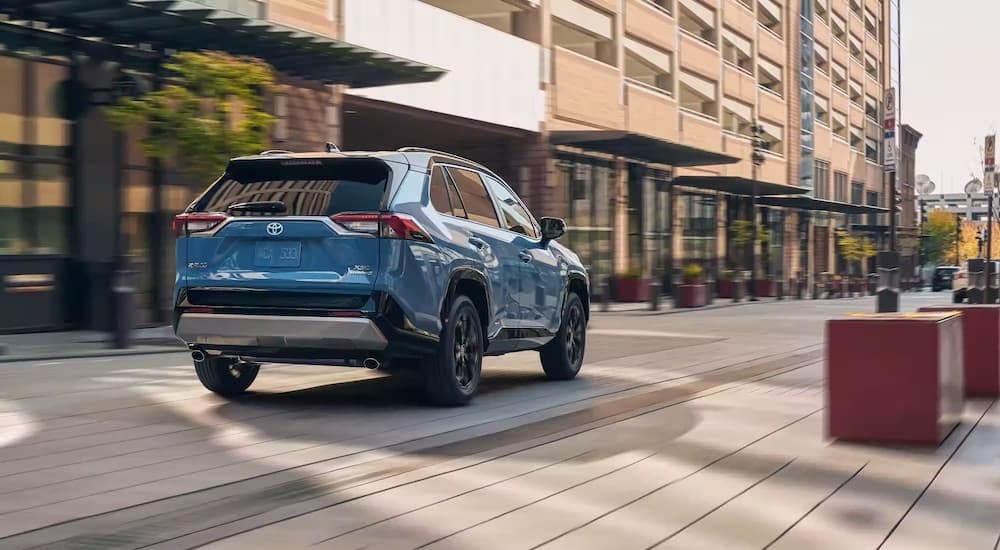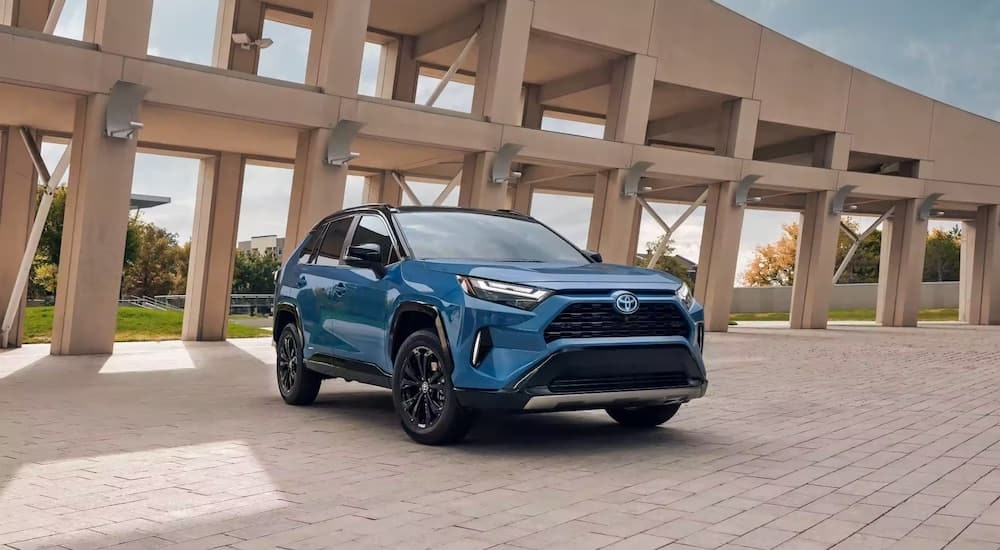
Five Things You Might Not Have Known About the Toyota RAV4
When looking for a used RAV4 for sale, most drivers concentrate on the more practical factors. How many miles does the vehicle have? Does it offer all of the necessary features? Is it safe? Is it reliable? Overall, most people go into a used car shopping scenario thinking about their overall investment and whether this is a good car going forward. While all of that is exactly what you should be thinking about when shopping for a used vehicle, sometimes it’s fun to look back on the history of that vehicle as well. As they say, we can learn a lot about the present by looking at the past!
In the case of the RAV4, there’s a lot of history to cover. Surprisingly enough, the idea of the RAV4 is over three decades old– and there are many more fun facts to discover in all those years. Take a look at a few fun facts about Toyota’s beloved SUV to get an idea of how the RAV4 has evolved to the version we drive today.
#1. The Very First RAV4 Was Unveiled in 1989
We tend to think of the Toyota RAV4 as a new and modern vehicle– and that’s exactly what Toyota had in mind when the initial concept was developed in 1986. By the time the RAV-FOUR concept vehicle made its debut at the 1989 Tokyo Motor Show, it was fully billed as a “neo-urban 4WD car” designed for the active lifestyles of young city dwellers. The RAV-FOUR was billed for younger drivers who mostly stuck to city roads but could benefit from the peace of mind of four-wheel drive.
Remember that, like other peppy activity vehicles of the day, the RAV-FOUR wasn’t intended as an off-road vehicle. 1989 was the mere cusp of the SUV boom, and Japanese auto manufacturers were doing very well following the success of their small, economical cars during the tumultuous 1970s-era fuel and oil shortages. Therefore, the idea was to create a smaller “multi-activity” vehicle that had the tough personality of a small truck but the pep of a coupe. And thus, the RAV4 seed was planted.

#2. The Original Market for the Production RAV4 Was a Young, Hip City Driver
Generally speaking, a concept vehicle and the actual version that makes it to production are significantly different. In fact, most concept cars never make it to the assembly plant at all. Therefore, the fact that Toyota did, in fact, eventually release a modified RAV4 vehicle is pretty telling for the SUV. Its US debut didn’t occur until 1996, but that gave Toyota plenty of time to tweak the model for its intended driver.
The term “RAV4” stands for “Recreational Active Vehicle with 4-wheel drive.” Ultimately, Toyota wanted to maintain its reputation for economical, reliable, and enjoyable vehicles while creating something that had a hint of adventure to appeal to younger crowds. In fact, Toyota released promotional images that included a completely open-air RAV4 with a dirt bike hanging out next to the driver’s seat. To get there, Toyota experimented with pulling parts from the Corolla, the Camry, and the Celica GT-four while paying close attention to the existing SUV market and the trends that were making this segment of the automotive industry start to blossom.
#3. The 1996 Toyota RAV4 Production Model Was Unlike Anything Else on the Market
The SUV market looked a lot different in 1996 than it does today. While today’s SUVs are considered excellent choices for the rigors of daily driving, the 1990s were a very different time for larger vehicles. At the time, SUVs were large, box-like vehicles designed for conquering the great outdoors. Models like the Toyota 4Runner, Jeep Grand Cherokee, and Ford Explorer dominated the market with their rough and tough persona. They were large inside, got terrible fuel mileage, and weren’t very nimble. In fact, some models didn’t even have rear seats, much less heated and ventilated power-adjustable seats with available massage settings!
Most SUVs at the time were body-on-frame construction, meaning the actual body of the vehicle was attached to a separate frame. The unibody construction of the RAV4 meant it was lighter, more maneuverable, and had better fuel economy. Suddenly, drivers had an option that provided them with a higher seating position and greater road visibility, the cargo room of a station wagon, and yet drove like a car. American drivers had a new option when considering their next vehicle: a small, economical SUV. While inventing a new SUV may seem like a risky move on Toyota’s part, the RAV4 was named “Automobile of the Year” by Automobile Magazine in 1997. And since then, the RAV4 has become one of, if not the top-selling Toyota nearly every year.
#4. There Have Been Some Interesting RAV4 Models Over the Years
Of course, not every version of the RAV4 has been a hit. In nearly 30 years of production, there were bound to be a few options that didn’t go over with their intended buyers quite as well as Toyota intended. In the early days of production, RAV4 models were offered in four or two-door configurations. Drivers could select between a manual or automatic transmission, and despite the vehicle’s name, front-wheel drive was offered in addition to all-wheel drive.
The RAV4’s first generation also had a fun option for drivers who selected the two-door version. The standard roof included two removable hard-top roof panels, but drivers could select a soft-top convertible, as well. These models ran from 1998 to 2000, so for those specifically looking for a convertible SUV, consider those used RAV4 models in particular. Interestingly enough, a three-row RAV4 was offered as an option from 2006 to 2012. To gain the attention of first-generation RAV4 drivers who now had a family to include on their road trips, the vehicle was modified to provide space for seven. While the intentions were good, the public appetite wasn’t ready for a “neo-urban” three-row SUV.

#5. Hybrid RAV4 Models Have Been Around for Years
Toyota has been producing hybrid and electrified models longer than many auto manufacturers. Many drivers are familiar with the Prius, which appeared in American markets in 2001 but has been a popular option in Japan since 1997. A hybrid version of the Toyota RAV4 originally hit the US market in 2016. Still offered with an all-wheel drive option, the first version of the hybrid RAV4 not only offered 194 hp, but a fuel economy of 34 MPG in the city and 31 MPG on the highway. However, as Toyota found themselves facing an all-electric future, they discontinued the RAV4 hybrid in 2019 to give it the full attention it deserved. As a result, drivers received models such as the 2021 RAV4 Prime, with 302 hp, a 42-mile battery-only driving range, advanced all-wheel drive, and a 0 to 60 mph time of just 5.7 seconds.
Choosing the Used RAV4 for Your Needs
There have been many changes to the RAV4 since the first concept car met the public in 1989. As driver needs and tastes have changed, so has the RAV4, leaving the American driving public with quite a few unusual versions. Still, many drivers still claim the RAV4 is one of the best vehicles they’ve ever owned. Given Toyota’s reputation for quality, reliability, and economy, it is easy to see how a fun, zippy SUV like the RAV4 would go from a strange idea to a beloved icon of the American roadways for nearly 30 years.


